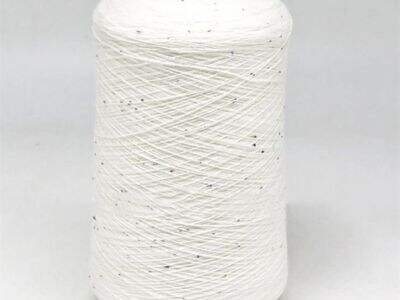Here at Linchpin Textile, we know how integral yarn selection is for your textile projects. Two of the most commonly available types are natural and synthetic yarn, each with its own traits and advantages. In this article, we will look at the main differences between natural and synthetic yarn, how to decide which is best for you and get a view of how these two materials are produced. Whether you have many years of experience in the textile industry, are a novice or even a hobbyist, learning the difference between natural and synthetic yarn twist can have a big impact on your finished work and help you avoid some common mistakes that other people tend to make. Let's dive in.
Natural vs. Synthetic Yarn
Yarn made from natural materials including cotton, wool, silk and linen are produced from the fibres of plants and animals. The fibres are harvested, processed and spun into yarn which is breathable, soft and ecological. Synthetic yarn, on the other hand, such as polyester, nylon and acrylic, are made by man out of chemicals. Acrylic yarn is made to be tough and easy to care for, and is generally cheaper than natural yarn. Both styles of blended yarn have their advantages and disadvantages, so it’s important to weigh what your project needs before deciding.
Natural vs. Synthetic Fiber Conclusion
There are several considerations when you're trying to choose between a natural or synthetic yarn. organic wool perfect for the projects which need to breathe, keep warm, or to have a luxurious drape. Natural yarns tends to be more soft to the touch and much more comfortable to wear. But natural yarn can shrink or stretch, and it may require more delicate handling. In contrast, synthetic yarn is a convenient option when you're working with a project that requires strength, along with good color fastness, and without the expense. Garments from man made twisted yarn are generally machine washable and wrinkle resistant and do not fade. Think about which type of yarn is the best for your project and go from there.
Natural vs. Synthetic Yarn Production
There is a huge degree of difference between the production procedure of natural and synthetic yarn. Yarn of natural origin begins with the growing or raising of plants and animals for raw fibres. These fibers are then washed, combed, spun, and twisted into yarn. It is a labour-intensive, time-consuming operation that can only be carried out by skilled labour using traditional methods. Synthetic yarn, on the other hand, is made in a chemical laboratory by way of polymerization and extrusion. Synthetic yarn is made on a massive scale with an automated, continuous process that is extremely fluid and standardized. Knowing how natural and man-made yarn is made can help you figure out how sustainable or high-quality the yarn is, in addition to how much it would cost.
Comparing Natural and Synthetic Yarn
The natural yarn and synthetic yarn both have their respective advantages and disadvantages to meet different demands. Natural yarns are biodegradable, replenishable and have a unique feel and texture. But the downside of natural yarns is they can pill, get static, and the colors fade. Synthetic yarn is strong and versatile, and it is available in a variety of colors and finishes. Still, synthetic yarn might not breathe as well or be as environmentally friendly as it is natural counterpart. You can compare the features of both natural and synthetic yarn to see which one will work best for your project, and achieve the results that you want.
The Natural vs. Synthetic Yarn Debate
The perennial argument of wether natural or synthetic yarn is “better” centres around sustainability, comfort, and performance. Supporters of natural yarns cite its biodegradability, hypoallergenicity and luxurious hand. They feel that natural wool is better for the environment and for humans. Supporters of synthetic love the fact that it is the strongest, cheapest and effective material available. They say that work in synthetic knitting provides a practical response to the contemporary textile needs and diminishes demands on natural resources. The discussion of natural vs synthetic yarn continues, presenting the range of issues with textile production and usage.
We get it at Linchpin Textile we know how important it is to select the right yarn for your textile project. We'll be there for you at each step of the process whether you go with the softness and breathability of natural yarn or the durability and affordability of synthetic yarn. Once you understand the fundamental differences between what is natural and synthetic yarn, you are better equipped when working with it and ensuring to achieve the results you hoped for in your project. We want to challenge you to explore all of our choices for both natural and synthetic yarns, and find the perfect yarn for your next project. Select Linchpin Textile for quality, innovation, and customer service.



